Swiss theatre gets high on Philip Glass and physics
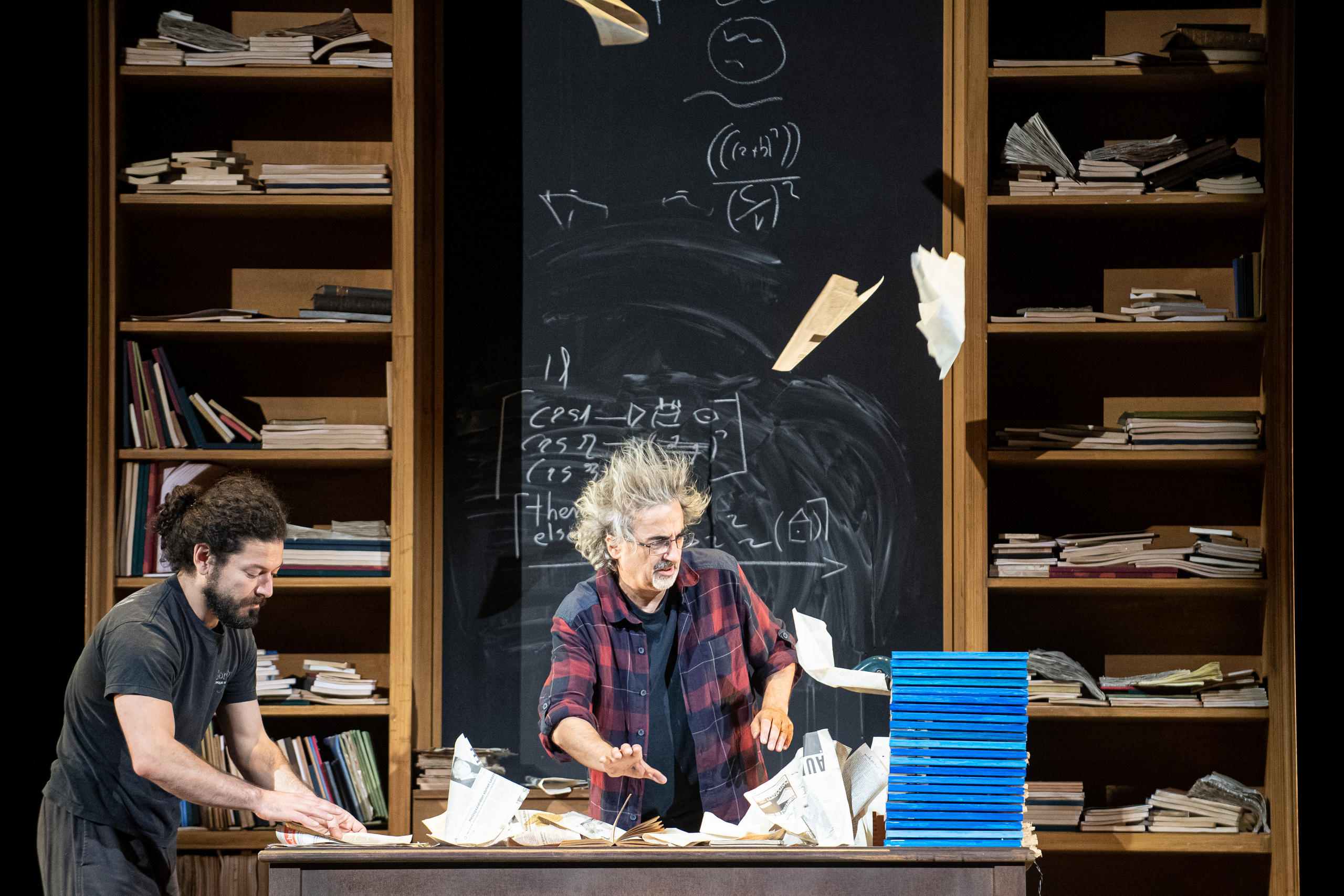
The Grand Théâtre de Genève starts its 2019/20 season with a bold new version of Einstein on the Beach, the milestone Philip Glass/Robert Wilson opera that has challenged directors for over 40 years.
However, the Compagnia Finzi PascaExternal link from Lugano in Italian-speaking Switzerland is not afraid of big events. With three Olympic ceremonies and dozens of montages and operas in its pocket, la Compagnia now brings a musical and visual treat for those ready to brave its four hours of hypnotic ecstasy.
Einstein on the Beach doesn’t have a plot and its narrative is made of loose associations related to nuclear physics, mathematics, music and whatever the viewer may feel. US stage director and playwright Robert Wilson himself said that “you don’t have to understand anything; you go there to get lost”.
swissinfo.ch followed the rehearsals for a whole day and night, a week before the opening on September 11. The rehearsal extended much beyond the closing time of the Grand Théâtre de GenèveExternal link, the biggest stage in Switzerland. Director Daniele Finzi PascaExternal link was working hard to attune actors, performers, orchestra, soloist, choir and technical staff.
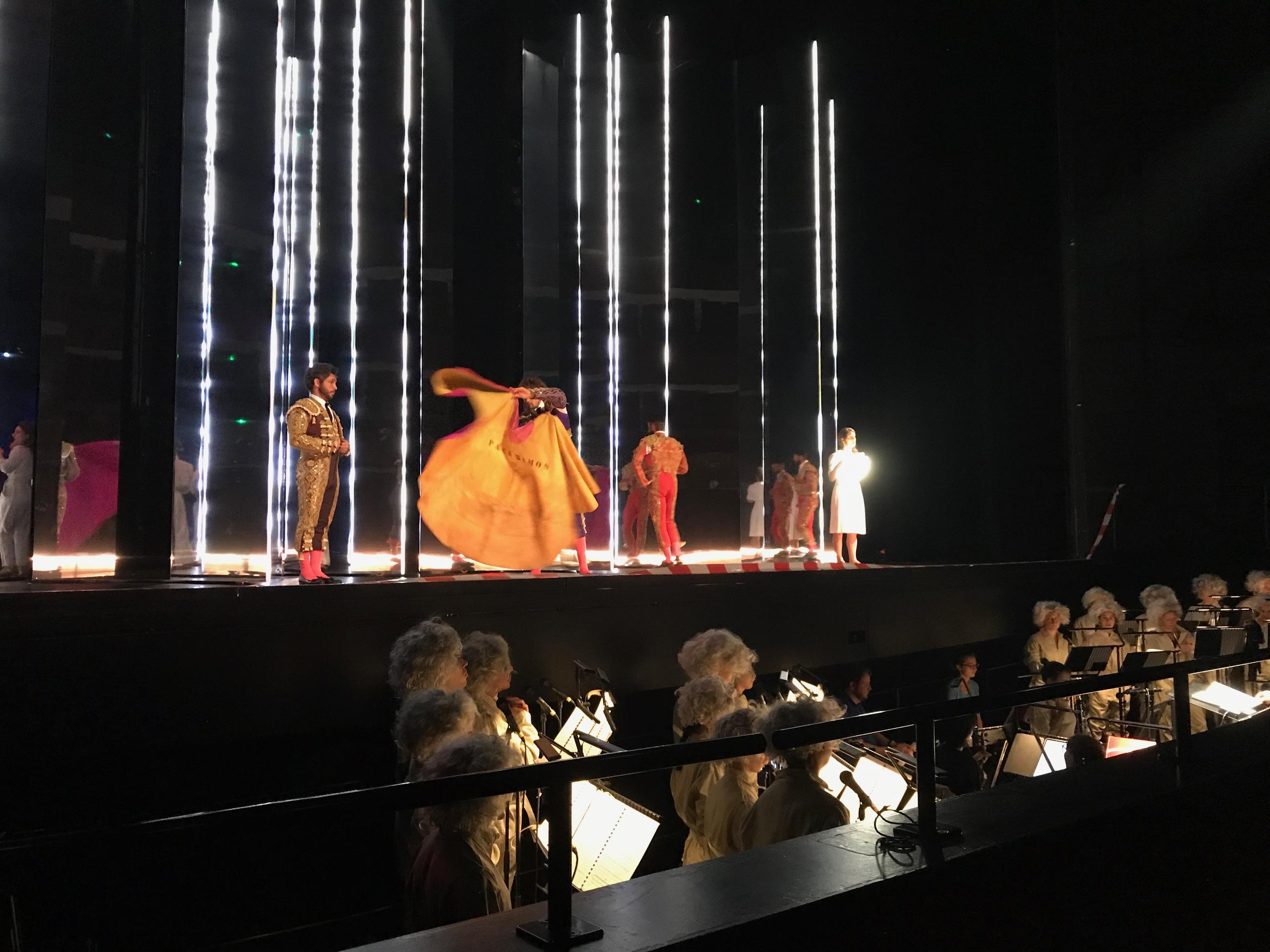
As the technical staff prepared props and set, Finzi Pasca takes a break to explain that, for him, the main force of Einstein is the composition of images that provoke an active reflection and reaction of the viewers. He says the opera relates to the creative process he engenders together with his core nucleus of collaborators.
“When we start, we always have this brainstorming moment when we look for the themes that we want to touch, associating ideas to build the images,” he says.
After watching the only filmed record of Wilson’s montage, one is left with the impression that Finzi Pasca created a completely different staging from Wilson’s original.
Finzi Pasca doesn’t agree completely. “All the integrity of the text and the basic concept of the play are there, although every director will try to discover other points of view and elements hidden inside the work and bring them to life.”
Heart of Glass
Robert Wilson’s original staging notwithstanding, it is Philip Glass’s score that is recurrently mentioned as the source of inspiration, not only for the directors but also for the artists.
For conductor Titus Engel there is also the freedom that the score gives to the musicians, who may set their own pace according to the rhythm of the performers on stage. This freedom is also extended to the audience, who are free to enter and leave the theatre as they wish.
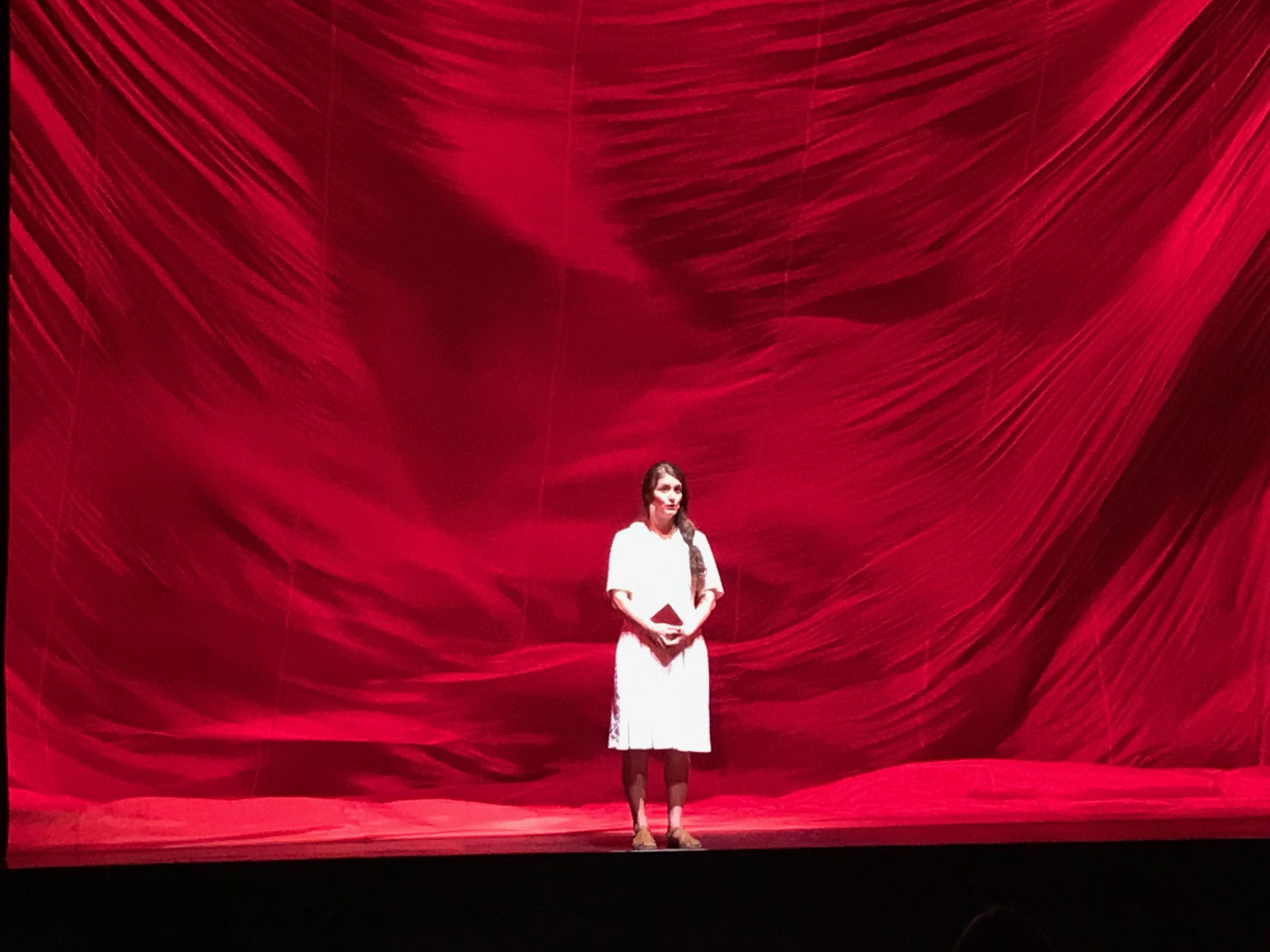
More
The rehearsals
Einstein on the Beach also marked an important breakthrough for the composer, who until then had worked as a plumber and taxi driver to make ends meet, and to keep his art free and independent.
Einstein on the Beach, as well as the two following works that make up Glass’s opera trilogy (“Satyagraha”, based on the life of the Mahatma Gandhi, and “Akhnaten”, based on the pharaoh who first introduced monotheism), was viewed by only a privileged few. Its fame preceded any proper critical mass until cinema amplified Glass’s trademark sounds.
With the soundtracks composed for Godfrey Reggio’s visual operas “Koyaanisqatsi” (1982) and “Powaqqatsi” (1988), the music of Philip Glass left the avant-garde cluster of the so-called minimalist scene (Glass hates the term) in New York and found an almost immediate resonance with bigger audiences.
That was when Finzi Pasca also discovered Glass’s music, “and since then I have followed all of his work”, he says.
This influence is evident on previous montages by Finzi Pasca, originally with the ensemble Teatro Sunil, founded in Lugano in 1983. Since its inception, the Sunil set a concept that has guided the Compagnia Finzi Pasca until today: a mix of theatre, dance, acrobatics, clowning and circus, where light and music are carefully crafted to compose narratives as dreamscapes.
The company is also known as the “Swiss Cirque du SoleilExternal link”, for whom it also performed two shows.
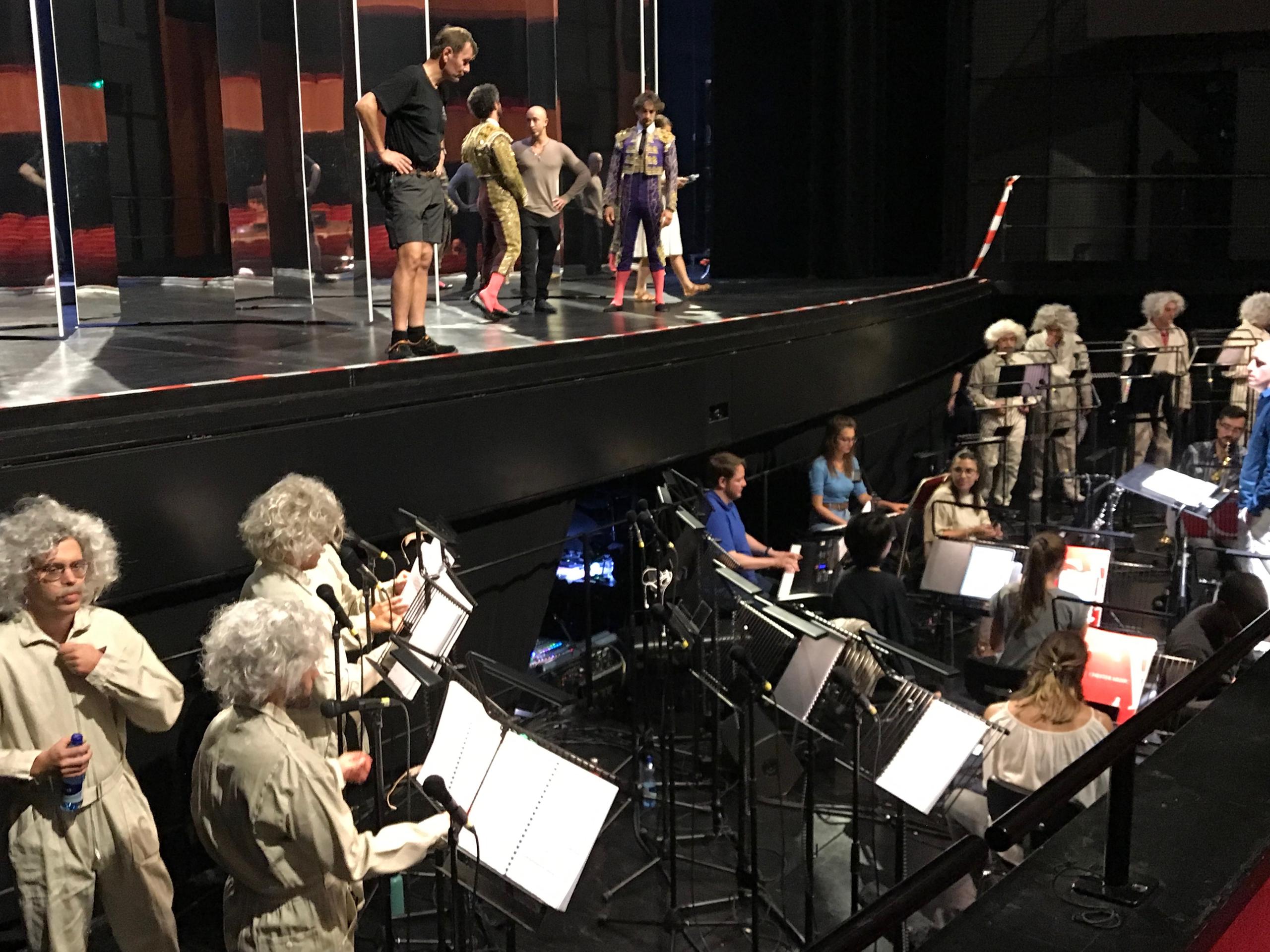
Multinational ensemble
Even though the company is deeply anchored in Lugano, it has always had an international identity. For the current staging of Einstein on the Beach, it counts one horse and over 60 artists, including musicians and choir, from 18 nationalities.
The libretto, by Christopher Knowles, is in English, but backstage one is immersed in a babel of French, Italian, Spanish and Portuguese.
But the language of Einstein on the Beach is purely aesthetics. The new staging of the opera attests to the words of critic Tim Page in 1992. “By its own radical example, Einstein prepared the way – it gave permission – for much of what has happened in music theatre since its premiere.”
Forty-three years after breaking all the rules of opera and inventing its own context, form and language, Einstein can still perplex an audience that is already quite used to the inventions it established.
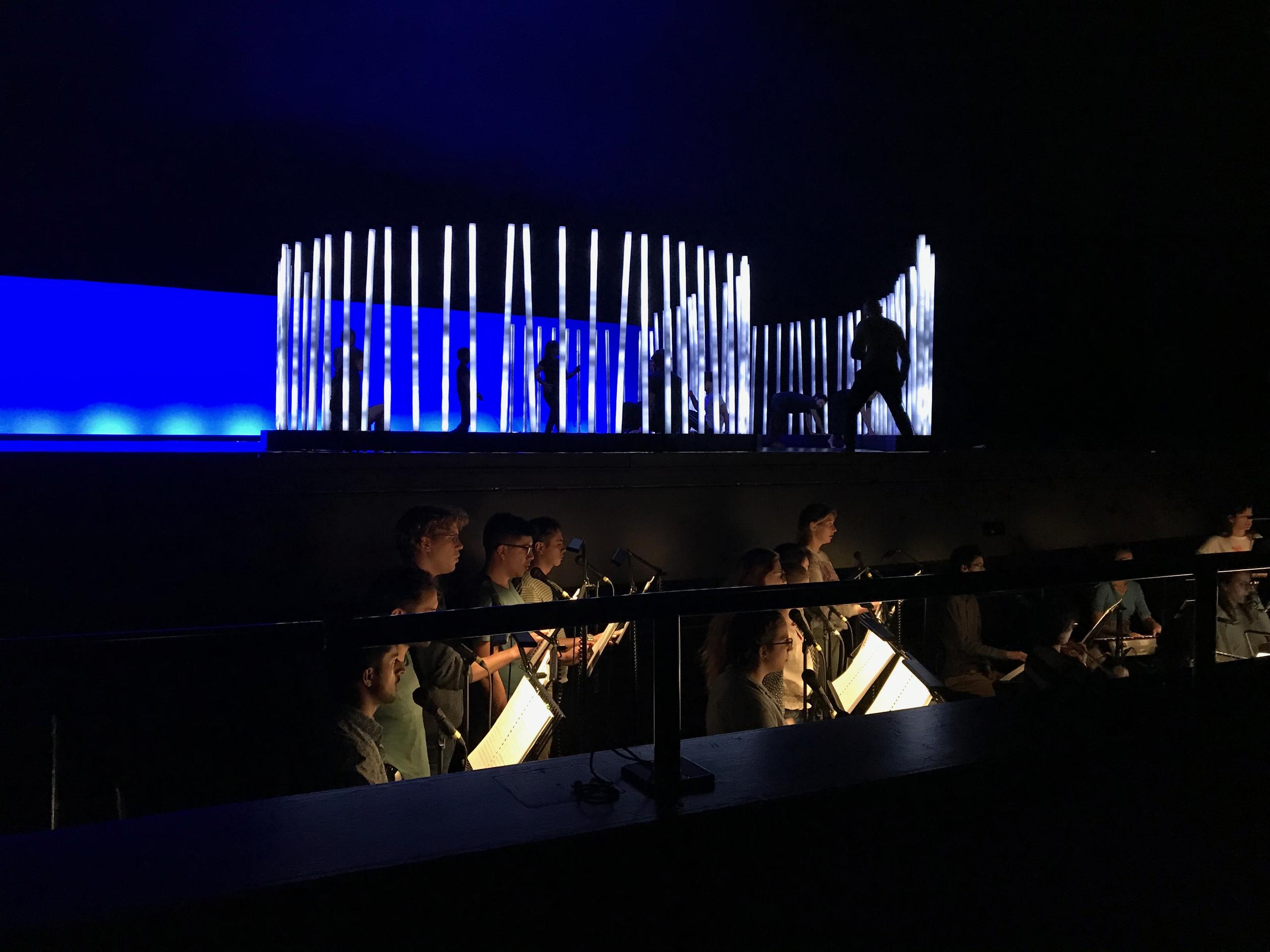
Radical is not relative
Modern opera was never the same after Einstein on the Beach. Lasting over 280 minutes, without breaks, the opera premiered in 1976 in Avignon (France) and since then has had very few re-enactments: in 1984, 1992 and 2012. A 2014 performance of the latter, in Paris, was streamed live by French Television and is the first filmed recording of the work.
There were three other attempts of free staging of Einstein. In 1989, German opera director Achim Freyer made his version at the Stuttgart State Opera but it flopped (“highly abstract”, judged the critics). In 2001, the work was relaunched as an “opera-installation” in Berlin, combining opera and installation art of various artists, whereas the public could stroll around the set and stage during the presentation – a development of the original concept, where the audience is free to leave and enter the theatre at will. More recently, in 2017, another German director, Kay Voges, staged his own version, the first without any involvement from either Glass or Wilson, at the Opernhaus Dortmund – this time with considerable critical praise.

In compliance with the JTI standards
More: SWI swissinfo.ch certified by the Journalism Trust Initiative
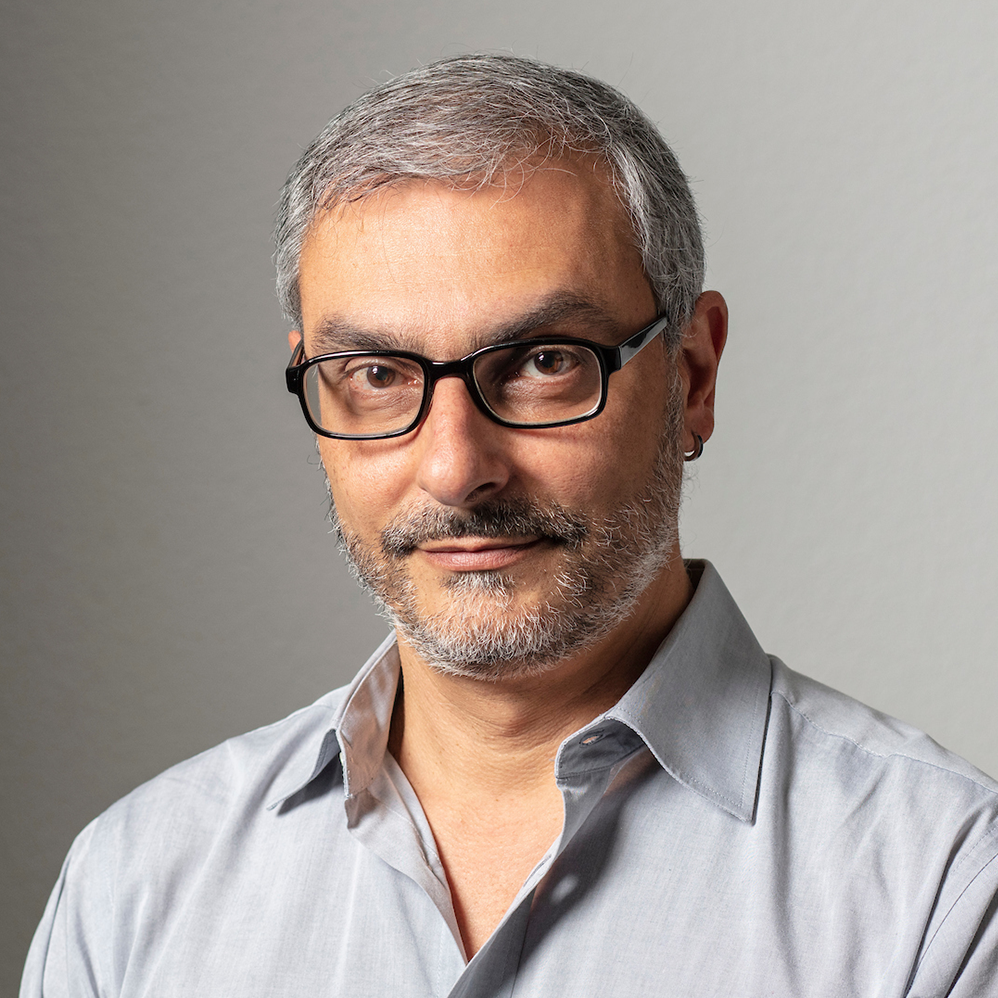








You can find an overview of ongoing debates with our journalists here . Please join us!
If you want to start a conversation about a topic raised in this article or want to report factual errors, email us at english@swissinfo.ch.